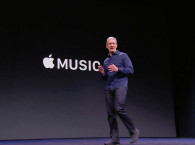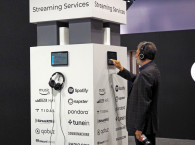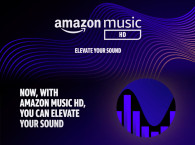
According to Nielsen’s January 2015 report, on-demand streaming is up 54%, vinyl LP sales increased 52% (and now comprise over 6% of physical album sales), and traditional radio still remains the top source for music discovery (yes, don’t discard radio just yet).
And while the music industry is still trying to adapt to this constantly changing environment, the audio electronics industry has thrown another spanner in the works and started the whole High-Resolution Audio (HRA) debate. (Obviously the running order for such events may vary depending on your perception.)
While marketing efforts are not going to be enough to bring high-resolution audio to the masses, as Neil Young himself had to admit, it certainly elevated the whole music industry model debate to an interesting and largely uncertain new level.
But the reason why I’m pondering the subject has to do with our own relationship with music. As I wrote some time ago, reacting to Apple’s announcement on the acquisition of Beats Electronics, the main motivation for the $3 billion investment was the Beats Music streaming service (which was basically the MOG Music platform, a streaming service Beats acquired in 2012 for just $15 million). As Apple’s CEO Tim Cook admitted, it was the interface and user experience of the Beat Music service that convinced him on the acquisition.

While we expect Apple to unveil the new Beats Music experience, we are now entering a whole new stage in music services with the expansion of other streaming services, basically using every possible argument to attract consumers, including high-resolution audio - which in fact, like Pono Music, is mostly lossless CD-quality material at best.
Following the recent acquisition of the Aspiro Group business (owner of TIDAL and WiMP HiFi music streaming services) by hip-hop star Jay-Z and the launching of TIDAL in the US, it becomes clear the stage is being set for a whole new era in music distribution.
This week, we’ve seen the announcement that TIDAL is entering a new chapter with direct engagement from artists such as Coldplay, Rihanna, Daft Punk, Alicia Keys, Jack White, Madonna, and a complete set of MTV-Award winners, targeted directly at Spotify and anticipating the launching of the new Beats Music service. The selling proposition involves “lossless hi-fi sound quality” streaming, powered by superstar exclusive content, while the real motivation has to do with a higher percentage of the revenues.

The new TIDAL service simultaneously launched as a web-browser exclusive player, but not as rich as Spotify’s player, which is getting better every week.
It’s too early to say what will be the impact of TIDAL’s initiative. My belief is that the user interface and overall experience will be decisive, together with the ability to create an environment where artists can directly participate and engage with users.
Certainly, there are interesting times ahead.








